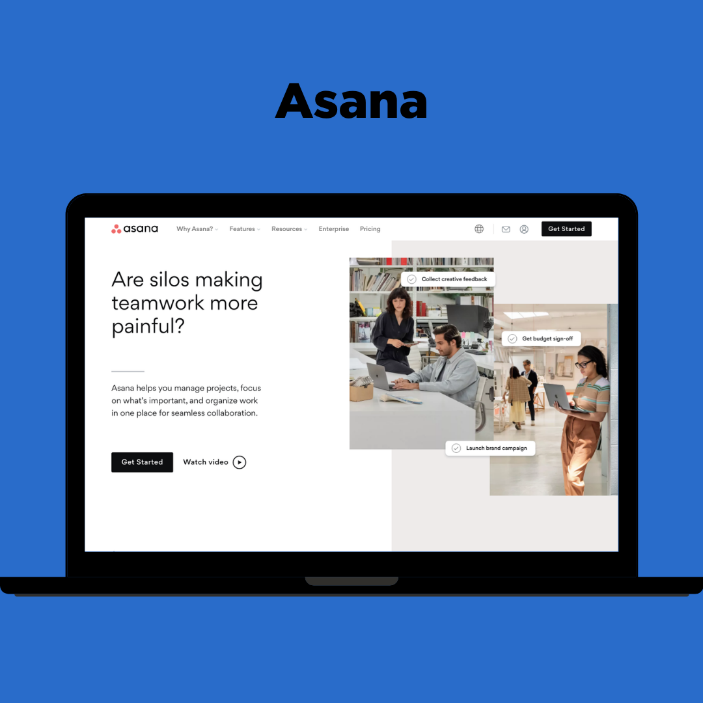Data Analysis Tools to Track and Measure Product Performance
Mar 7, 202316 min read

Robert Krajewski
Co-founder and CEO of Ideamotive. Entrepreneur, mentor and startup advisor.

Product owners play a critical role in ensuring the success of a product, and they are responsible for optimizing and managing product backlog to ensure the product's highest value is achieved. They use product owner tools to ensure the successful completion of goals,
Table of Content
One of the essential product owner tools is the product roadmapping software, which allows product teams to create and manage product roadmaps. It also provides a visual representation of the development process, including timelines, milestones, and dependencies, and product owners use product roadmaps to outline future releases and product functionality.
Product roadmapping allows product owners to visualize the development process and helps to align goals, strategies, and timelines for product development, ensuring efforts are focused on delivering value to customers and achieving business objectives.

Additionally, product roadmapping opens the door for staff augmentation. When looking at the big-picture overview of the product roadmap, a product owner will know when he needs to hire additional hands to supplement the internal team and provide the needed expertise and capacity to move faster and deliver better products.
However, to get the most out of product roadmapping tools, combining them with data analysis tools to track and measure product performance is important. After all, creating a data-driven roadmap is your best strategy for product growth.
After reading this article, you'll better understand the various product owner tools and techniques available to help you track and measure your product's performance. So, are you ready to take your product to the next level? Let's get started!
Understanding Data Analysis Tools

Data analysis tools are software applications and platforms that help organizations to process and make sense of large amounts of data. These tools allow users to extract insights and knowledge from data to support decision-making, improve processes and drive business growth.
Some common data analysis tools include Power BI, Excel, Tableau, etc.

One of the key benefits of using data analysis tools is that they allow product owners to better understand their data by providing visual representations and summaries. The provided insights are used to make informed decisions about the development of their products.
For example, by incorporating data analysis tools into the product owner tools arsenal to track user engagement and adoption, product owners can identify areas for improvement and make changes that will increase user satisfaction and engagement.
How to Set Up a Data Analysis System
Product roadmapping is essential to product development, as it helps organizations understand current market trends, customer needs, and competitor behavior.
However, to create a successful product roadmap, it is essential to set up a data analysis system to provide the necessary data and insights for decision-making.
Here are the three steps needed to set up a data analysis system as a technical product owner.
1. Select the Right Data Analysis Tools
The capabilities of data analysis tools have grown through the years, and they are vital for businesses to make informed decisions. So as a product owner who wants growth, you need them.
The first step in setting up a data analysis system is to select the right tools. Numerous data analysis tools are available in the market. However, choosing a user-friendly, scalable tool that integrates well with other systems is crucial because the right data analysis tool will help your organization make informed decisions based on accurate and up-to-date data.
Examples of the most popular data analysis tools include Tableau, Power BI, Google Analytics, and QlikView. Each tool has its strengths and weaknesses, so you need to choose the right one that meets your needs.
2. Establish your KPIs (Key Performance Indicators)
KPIs are critical to product road mapping as they help organizations monitor the progress of their product development. Some of the KPIs that organizations can establish include user engagement, conversion rates, customer satisfaction, and revenue growth.
Establish your Product's KPIs, which should be tracked regularly, so any changes or trends can be analyzed and acted upon.
3. Integrate Data Analysis Tools with Product Roadmapping Tools
After you have set up the data analysis system, it is essential to integrate it with the product road mapping tools. This integration step provides a unified view of your organization's data and helps you make informed decisions about the product roadmap.
For example, you can use data analysis tools to track customer satisfaction with a particular feature and adjust the product roadmap accordingly. This data analysis integration will also help your organization save time and resources by eliminating the need for manual data entry and analysis.
How to Use Data Analysis Tools to Track Product Performance

One of the key components of effective product road mapping is using data analysis tools to track product performance. Data analysis tools can be powerful for tracking product performance and making informed business decisions. Here are some steps to follow to use data analysis tools effectively.
1. Identify the metrics to track
Determine the key metrics you want to track for your product, such as conversion rates, customer satisfaction, or usage patterns. Your chosen metrics should align with your product goals.
2. Gather the data
Collect data on the metrics you've identified. Your data could include conversion, customer feedback, or usage logs. Ensure that the data is accurate and complete.
3. Clean and preprocess the data
Clean and preprocess the data to ensure it can be analyzed easily. This step might include removing missing or incorrect values, transforming data into a consistent format, or aggregating data into useful groups.
4. Input the data in your chosen data analysis tool
Many data analysis tools are available, including spreadsheet programs like Microsoft Excel, data visualization tools like Tableau, and statistical analysis software like R or SAS. Choose a tool that is best suited to get the job done.
5. Analyze the data
Use the data analysis tool to perform your analysis. This process could include generating charts, graphs, and tables to visualize the data, running statistical tests to identify trends and patterns, or using machine learning algorithms to make predictions.

Here are the three general processes that occur when analyzing your data:
A. Track progress toward product goals
One of the primary uses of data analysis tools in product roadmapping is to track progress toward product goals by analyzing your identified product KPIs.
As a result of tracking these KPIs over time, product owners can see how well the product is performing and use these insights to make informed decisions aligned with business goals.
B. Measure user engagement and adoption
Another critical aspect of tracking and analyzing product performance is measuring user engagement and adoption. This process can involve examining how users interact with the product, including how often they use it, how long they spend on it, and what features they use most often.
This data can help product managers understand user behavior and make informed decisions about product improvement.
C. Identify trends and patterns in product usage
Finally, when analyzing your data, you identify trends and patterns in product usage to provide valuable insights into how the product performs.
This step can include analyzing data on user demographics, usage patterns, and customer feedback. By identifying these trends and patterns, product managers can understand how the product is used and what users want.
6. Interpret the results
Once you've analyzed the data, interpret the results to understand what they mean for your product. Make sure to look for meaningful patterns and correlations in the data and consider the context in which the data was collected.
7. Take the necessary action
Based on your analysis, determine what actions you should take to improve product performance. For example, if the product is not meeting usage goals, the product team may need to reevaluate the product's features or user experience to increase adoption. Or, suppose the data shows that users are not engaging with particular features; the product team may need to consider removing or revamping those features to improve the overall user experience. Alternatively, if the data shows that a particular demographic uses the product more frequently than others, the product team may consider tailoring it to meet their needs better.
How to Make Data-Driven Decisions for your Product
By regularly tracking your product performance, you can gain valuable insights into your product's strengths and weaknesses and make informed data-driven decisions to drive growth and success. Now, let's focus on how you can make data-driven decisions for your product.
1. Use data to inform product development
In today's highly competitive business environment, data-driven decision-making is vital to put you ahead of your competitors.
For you to make informed decisions about product development, it is essential to have access to data that provides insights into customer behavior, market trends, and other key metrics.
The data can decide a product's features, functionality, and design. For example, if customer feedback suggests a particular feature is in high demand, the product roadmap can be adjusted to prioritize that feature in the development process.
2. Make informed decisions about product features and prioritization
Data-driven decision-making is not just about making decisions based on data but also about making informed decisions about product features and prioritization.
By analyzing customer feedback, market trends, and other vital metrics, product owners and managers can determine which features are most important to customers and prioritize those features in the development process.
Analyzing your data and taking the necessary action will help ensure that your product meets customers' needs and provides the greatest possible value.
3. Use data to identify areas for improvement
In addition to informing product development and prioritization, data can also be used to identify product improvement areas.
For example, if customer feedback suggests that a particular feature is not working as well as it should, the product roadmap can be adjusted to address that issue.
By using data to identify areas for improvement, product owners and managers can ensure that their products deliver the best possible user experience.
Overview of Top Product Roadmapping Tools

Roadmunk is a top product roadmapping tool that enables teams to create and manage product roadmaps. It's designed to visually represent the product development process, including timelines, milestones, and dependencies. With Roadmunk, teams can easily create product roadmaps that align with their business objectives and make certain everyone is on the same page.
Roadmunk is a top-performing product roadmapping tool that offers teams a simple yet powerful way to create and manage product roadmaps.
With its ability to share and collaborate with stakeholders, track progress, and make real-time updates, teams can ensure everyone is aligned and working towards the same goals, making it easier to achieve success.
Noteworthy Features of Roadmunk
1. Collaboration with stakeholders
Teams can easily share their roadmaps with other members of the organization and get feedback, making it easier to ensure everyone is aligned and working towards the same goals.
Also, this tool allows teams to track progress and make real-time updates, keeping everyone updated on the latest developments.
2. Ease of use
Teams can effortlessly create roadmaps without previous experience with product roadmapping tools.
Additionally, the user-friendly interface and intuitive design make it easy to get started, so teams can get up and running quickly and see results in no time.
Roadmunk Integrations
Roadmunk can integrate with other essential tools like Jira, Trello, Tableau, Power BI, UserVoice, and Intercom.
Roadmunk Pricing
Roadmunk offers various pricing plans for different team sizes and needs. The pricing starts from $19/user/month for the basic plan, with features such as customizable templates, real-time collaboration, and integration with project management tools. For enterprise-level customers, custom pricing plans are available.

Aha! is a product development software that provides an all-in-one platform for product managers and teams to collaborate, plan, and manage the product development process.
With Aha!, product owners can create visual roadmaps, set goals and objectives, and track progress toward their product objectives. The tool also provides a centralized repository of all product information, making it easy for teams to access the latest information and stay up-to-date on the product roadmap.
Conclusively, Aha! is a powerful product roadmapping tool that provides a comprehensive platform for product owners and teams to plan, manage, and track the product development process.
Noteworthy Feature of Aha!
1. Flexible roadmapping capabilities
Product owners can create and manage multiple roadmaps tailored to specific audiences, product lines, or development stages, which gives product owners a clear view of their roadmap to make informed decisions about product development.
Aha! Integrations
Aha! integrates with a range of other tools like Jira, Trello, GitHub, Pivotal, Redmine, and Asana, including project management and agile development tools.
Aha! 's ability to combine with a range of tools makes it easy for product owners to manage the entire product development process from one central platform. With Aha!, product owners can streamline their workflows, reduce manual processes, and ensure that their product roadmap is aligned with business objectives.
Aha! Pricing
Aha! offers various pricing options, starting at $59 per month for their basic plan and going up to $449 per month for their enterprise plan. They also offer a free trial so teams can try the tool before committing to a paid plan.

Trello is the ultimate project management tool. It provides a visual platform for tracking projects, tasks, and timelines, making it easy for teams to collaborate and stay on track.
Generally speaking, Trello is a flexible and user-friendly tool that can be used for product roadmapping. Its ease of use, collaboration features, and integration capabilities make it a popular choice among teams.
Noteworthy Features of Trello
1. Broad and card structures
Trello uses a simple and intuitive drag-and-drop interface, allowing users to create boards, lists, and cards to represent projects, tasks, and milestones.
2. Flexible customization
It has various applications like product roadmapping.
3. Mobile app
With its mobile app, product owners can easily manage their roadmaps on the go.
Trello Integration
Trello also integrates with various project management tools and techniques, such as Google Drive and Slack, making it easy for teams to share files and communicate.
Trello Pricing
Trello offers free and paid plans starting from $5 per user/month, making it accessible for teams of all sizes. The paid version provides additional features such as custom backgrounds, more board templates, and advanced security options.

ProdPad is a cloud-based product roadmapping tool designed to help product managers and owners create and manage product roadmaps.
Also, ProdPad offers a comprehensive set of features and product management tools and techniques to help product teams plan, prioritize, and communicate their product strategy effectively.
Noteworthy Features of ProdPad
1. Idea management system
The system allows product owners to collect and organize product ideas from various sources, such as customer feedback, market trends, and internal brainstorming sessions. The tool also includes a built-in voting system that allows teams to prioritize and select the most promising ideas.
2. Visual representation
It visually represents the product development process, including timelines, milestones, and dependencies. Product owners can easily drag and drop items on the roadmap to make updates and share the roadmap with cross-functional teams for collaboration.
ProdPad's user-friendly interface makes it easy for product owners to plan, prioritize, and communicate their product roadmap to cross-functional teams.
ProdPad Integration
ProPad integrates with several tools, including Jira, Trello, AzureDevOps, Dropbox, Pivotal Tracker, and GitHub, making it easier for teams to collaborate and access relevant information.
ProdPad Pricing
In terms of pricing, ProdPad offers a range of pricing plans, including a free version, as well as premium plans with added features and functionality.
Prices range from $44 per editor/ month for the advanced plan to $0 per month for the free version. The exact cost for your organization will depend on your team's size and the level of functionality required.

ProductPlan allows teams to visualize their product strategies and prioritize initiatives. It is a cloud-based software that provides a comprehensive solution for product managers and owners to create, communicate, and collaborate on product roadmaps.
Furthermore, ProductPlan is a comprehensive product roadmapping tool that offers a range of features and integration options to support teams in their product planning and execution efforts.
Noteworthy Features of ProductPlan
1. Collaboration tools
With its real-time collaboration, product owners and managers can easily share their roadmaps with cross-functional teams, stakeholders, and other key members.
2. Visualization
With ProductPlan, you can create visual roadmaps that help you align your goals, strategies, and timelines for product development.
3. User-friendly interface
The software provides an intuitive drag-and-drop interface, allowing you to create roadmaps quickly and easily.
4. Tracks progress
The software provides real-time updates and notifications, making tracking your product's development easy and keeping everyone informed.
ProductPlan Integration
It provides seamless Integration with many project management tools like Jira, Slack, Trello, AzureDevops, etc.
ProductPlan Pricing
ProductPlan offers a free trial for 14 days, followed by several pricing tiers based on the number of users and features needed. Prices range from $39 per editor/ month for the Basic plan to $69 per editor/month for the Professional and a higher range for Enterprise.

Asana is another well-received project management tool that offers product roadmapping capabilities. With Asana, product owners can create detailed product roadmaps, set tasks, and track progress in real-time. The tool also visually represents the development process, including timelines, milestones, and dependencies.
Ultimately, Asana is a user-friendly and flexible tool that can help teams collaborate and visualize their product roadmaps. With its range of features, ease of use, and cost-effectiveness, Asana is a top option for product owners looking for a product roadmapping tool.
Noteworthy Features of Asana
1. Collaborate
Teams can create tasks, set due dates, and assign tasks to team members.
2. User-friendly interface
It's easy for teams to start using the tool immediately.
3. Timeline
Asana offers a visual timeline to help teams track deadlines and milestones.
4. Reporting
Teams can generate reports and presentations to share their roadmaps with stakeholders.
Asana Integration
The tool integrates with various other tools and services, Jira, Microsoft team, Adobe Creative Cloud, Okta, Trello, GitHub, Slack, etc., for a seamless workflow.
Asana Pricing
Asana offers a variety of pricing plans, including a free option for teams with up to 15 members. The paid plans range from $10.99 per user per month to $24.99 per user per month, depending on a company's needs.

Jira is a popular project management and issue-tracking tool used by teams in software development, IT, and other industries.
It also has a product roadmapping feature that allows product owners to create and manage product roadmaps, track progress, and collaborate with cross-functional teams.
Jira falls under the perfect example of project management tools and techniques that can help teams collaborate and visualize their product roadmaps.
Noteworthy Features of Jira
1. Customizable roadmaps and Collaboration
Teams can create and visualize product roadmaps with flexible templates, themes, and workflows. They can work together in real-time, assign tasks, manage feedback, and track progress.
2. Timeline
Jira offers a visual timeline to help teams track deadlines and milestones.
3. Reporting
Teams can generate reports and presentations to share their roadmaps with stakeholders.
4. Agile methodologies
Jira supports Agile methodologies, such as Scrum and Kanban, to help teams manage their product development process.
Jira Integration
Jira integrates with various tools, including Bitbucket, Confluence, Trello, and Slack, for a seamless workflow.
With this platform, technical product owners can track progress and make updates in real-time.
Jira Pricing
There are various pricing plans for Jira, including a free option for teams with up to 10 users. The paid plans range from $5 per user/month, depending on the needed features and level of support.

This project management tool helps teams plan, prioritize, and track the development of their products.
Zoho Sprints is a comprehensive and affordable project management tool that provides teams with a centralized platform for all their product development needs.
Noteworthy Features of Zoho Sprints
1. User Story Mapping
Every team can organize its product backlog into user stories and map them visually to see how they fit together.
2. Roadmap Visualization
Provides users with a seamless ability to create and share product roadmaps showing progress, deadlines, and plans.
3. Collaboration
Zoho Sprints facilitates real-time collaboration between team members, stakeholders, and customers.
4. Reports and Dashboards
Users can use reports and dashboards to track their progress, identify trends, and make data-driven decisions.
Zoho Sprints Integration
Zoho Sprints integrates with other Zoho tools, such as Zoho CRM, Zoho Projects, and Zoho Mail, as well as Slack, GitHub, and Jira. Consequently, allowing teams to seamlessly switch between tools and keep all their data in one place.
Zoho Sprints Price
There's a free plan for teams of up to 3 members, and paid plans start at $5 per user per month. The paid plans include additional features such as custom branding, advanced reporting, and more.

Craft.io is the end-to-end product management platform with best practices built-in. It provides a visual and collaborative platform for teams to plan, track, and execute their product roadmap.
Noteworthy Features of Craft.io
1. Visualization
Users can get a visual representation of the product roadmap, making it easy to understand and communicate with stakeholders.
2. Collaborative Planning
Teams can work in real-time to plan and prioritize product initiatives, making aligning strategy and goals easier.
3. Task Management
Craft.io provides a centralized place for teams to manage tasks and keep track of progress, making it easier to stay on track and deliver results.
4. Customizable Templates
Offers users customizable templates for different product roadmaps, making it easy to get started and align on a common framework.
Craft.io Integration
Craft.io integrates with other tools such as Jira, Slack, Google Workspace, and Google Drive, making managing the end-to-end product development process more straightforward.
Craft.io Pricing
Pricing for Craft.io starts at $37 per user per month, with different pricing options available based on the size of your team and the level of features you require.

This product management platform helps teams manage strategy, understand user needs, prioritize, and align their teams around clear roadmaps.
Noteworthy Features of Airfocus
1. Priority Matrix
Airfocus visualizes a team's product roadmap, allowing users to prioritize projects and initiatives based on their impact and feasibility.
2. Collaboration
Teams can collaborate on their product roadmap in real-time, making it easier to align and make decisions together.
3. Customizable Roadmaps
Airfocus provides a flexible and customizable roadmap template that can be tailored to meet the unique needs of each team.
4. Planning & Forecasting
It includes forecasting and planning tools to help teams plan for future initiatives and allocate resources accordingly.
Airfocus Integration
Airfocus integrates with several popular project management tools, including TJira, Trello, Shortcut (formerly Clubhouse), Azure DevOps, Asana, Zapier, and more. This integration makes it easy for teams to connect their product roadmap to existing workflows and tools.
Airfocus Pricing
The platform offers a variety of pricing plans, ranging from a free plan to a more comprehensive enterprise plan. Pricing plans start from $19 and are structured to meet the needs of teams of all sizes based on the number of users and the level of customization required.

As a product owner, when you can't find any service that will cater effectively to your business needs, then having a custom solution built for your company is the way to go.
At Ideamotive, we help our clients build and implement custom solutions. I believe having a custom solution built for you is an excellent option for product owners looking for a tool tailored to their specific needs and requirements.
Here's a case study for a custom solution we recently built for a client; in it, you will see the step-by-step process we use to ensure we offer only the best solutions to our clients.
Noteworthy Features of Using Ideamotive's Custom Solutions
1. Everything will be custom-made for you
After you have presented us with the idea of the product manager tools and techniques you want to be built for your product, we get started on the prototype, fine-tuning the business issues to the demo and coming up with the final product.
2. Flexibility
One major advantage of having a custom solution built for your product is the flexibility building process provides. You can get customer feedback on the demo and send it to the team building your custom solution so they can fine-tune it into a valuable product that your customers will use and happily recommend to others. With a custom solution, you're sure of having a solution tailored to your company's specific needs, making it more effective in helping you achieve your goals.
3. Customized support
Depending on your requirements and what you need done, we will help you assemble your product team to continue developing your product. We can also support the onboarding and help design all the processes.
Criteria for Selecting Product Roadmapping Tools
What makes a great product owner is their knowledge of the required features in the product roadmapping tool for their product. Understanding what is needed will guide them in their selection and ultimately lead to the success and growth of the product. The following criteria should be considered when picking a product roadmap tool:
User-friendly interface: A tool that is easy to use and navigate can help to streamline the roadmapping process.
Collaboration features: Ability to collaborate with team members in real-time, assign tasks, and manage feedback.
Customization options: A tool that allows customization of templates, themes, and workflows can help align the roadmap with company processes and goals.
Integration with other tools: Integration with project management, product development, customer feedback, and other necessary tools can help ensure a seamless workflow.
Reporting and visualization: The ability to generate reports and visually represent the roadmap can help stakeholders understand the progress and priorities.
Scalability: Look for a tool that can accommodate growth and support your team as you scale your product offerings.
Price: Consider the budget and ensure the tool offers value for your money.
Customer support: The availability of customer support, tutorials, and resources can help quickly resolve any usage issues.
Why You Should Use Product Roadmapping Tools to Plan and Prioritize Product Development
Using product roadmapping tools can be a crucial aspect of product development, as it helps product owners plan and prioritize their efforts effectively to achieve product goals.
Product roadmapping tools visually represent the development process, including timelines, milestones, and dependencies, allowing product owners to understand the product's journey clearly. The information obtained from these product owner tools can help make informed decisions about what to work on next and how to allocate resources, ensuring they're working on the right things at the right time.
The big-picture view of product roadmapping tools allows product owners to align their goals and strategies with their product development process. By creating a roadmap, product owners can ensure that everyone is working towards the same goals and that the development process is aligned with the company's objectives.
In addition, product roadmapping tools can help product owners manage changes in workload, respond to market opportunities more quickly, and address critical skills gaps; through staff augmentation to support the planning and prioritization process by providing additional expertise and capacity.
Also, various features and capabilities of the tools can be used to support the planning and prioritization process, such as task assignments, progress tracking, and customer feedback gathering.
Ultimately, with product roadmapping tools, product owners can deliver better products faster and with tremendous success.
Conclusion
Product roadmapping tools are essential in product development, providing organizations with a visual representation of their product strategy and initiatives.
These tools help teams to prioritize initiatives, allocate resources, and stay aligned with their goals. However, effective product roadmapping requires more than just the right tool. It also requires staff augmentation.
Staff augmentation is an important factor in product development; at one point or another in the product roadmap, product owners will require additional expertise and resources to enhance their product development efforts. By incorporating staff augmentation into the product roadmapping process, organizations can benefit from increased expertise and efficiency, allowing them to bring their product to market more quickly and effectively.
In conclusion, choosing the right product roadmapping tool and effectively incorporating staff augmentation is crucial for the success of product development. By leveraging the right tools and resources, organizations can ensure that their product development efforts are aligned with their goals and executed efficiently and effectively.

Robert is a co-founder of Ideamotive. Entrepreneur, who with passion spreads digital revolution all around the internet. Mentor and advisor at startup accelerators. Loves to learn and discover new business models.
View all author posts
Trending articles
21 Dazzling Examples of Mobile App UI Design to Inspire You in 2023
Michał Pruciak 7 min read
MedTech vs HealthTech vs BioTech: What Are The Differences?
Michał Pruciak 7 min read
10 Business Applications of Neural Network (With Examples!)
Michał Pruciak 4 min read
Best React Native Boilerplates to Use In 2023
Michał Pruciak 6 min read
10 Irresistible Examples of Web Design Best Practices for 2023
Adam Kozłowski 7 min read

The State of Central & East Europe IT Outsourcing and Offshoring 2022 Report
Belarus • Poland • Romania • Ukraine
Read nowLooking for a specific type of software development service?
Looking for exceptional tech talent to join your team?
Our broad network of battle-tested software developers, designers, managers, and business consultants is here for you.
Rated 4.8 / 5.0 by clients from various industries and locations.
.png)
.png)



